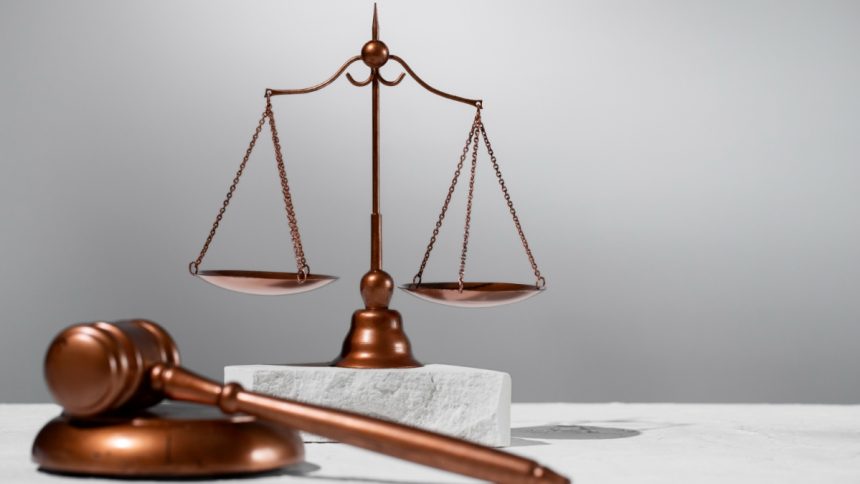Failing to yield the right-of-way is a common cause of traffic accidents, often leading to severe injuries and significant legal consequences. Understanding the legal implications of such incidents is crucial for both drivers and motorcyclists to navigate the complexities of fault and compensation.
For those injured in these types of accidents, seeking assistance from a lawyer if injured in a motorcycle collision can be essential for navigating the legal complexities and securing appropriate compensation.
Understanding Right-of-Way Laws
Right-of-way laws are designed to ensure the smooth flow of traffic and prevent accidents. These laws dictate which vehicle has priority in different traffic situations, such as at intersections, pedestrian crosswalks, and while merging. When a driver fails to yield the right-of-way, it can lead to dangerous collisions, particularly for motorcyclists, who are more vulnerable on the road.
Motorcyclists rely on drivers adhering to these laws to navigate safely. When a driver ignores right-of-way rules, motorcyclists may be forced to swerve or brake suddenly, often resulting in accidents. These sudden maneuvers not only put motorcyclists at risk of physical harm but also lead to legal battles over fault and liability.
Ensuring that all drivers understand and follow right-of-way laws is crucial for reducing accidents and enhancing road safety. Public awareness campaigns and driver education programs can help reinforce the importance of these laws, ultimately protecting the most vulnerable road users.
Common Scenarios of Failing to Yield
Failing to yield the right-of-way is a common cause of accidents, occurring in various scenarios. Here are the key situations where this issue frequently arises:
- Intersections: Drivers may run stop signs or red lights, failing to yield to oncoming traffic or pedestrians. This can lead to severe collisions and injuries.
- Merging Lanes: When merging onto highways, drivers may not give the right-of-way to vehicles already on the road, causing dangerous merging collisions.
- Pedestrian Crosswalks: Failing to yield to pedestrians in crosswalks can lead to serious injuries for both pedestrians and motorcyclists. Motorcyclists may be forced to take evasive actions to avoid hitting pedestrians, resulting in loss of control and crashes.
- Uncontrolled Intersections: At intersections without traffic signals, drivers may fail to yield to vehicles coming from the right or those already in the intersection, leading to accidents.
Legal Consequences and Liability
The legal consequences of failing to yield the right-of-way can be severe. Drivers found at fault for such violations may face traffic citations, fines, and increased insurance premiums. More importantly, they can be held liable for any accidents and injuries resulting from their failure to yield.
In legal terms, establishing fault in right-of-way accidents involves proving that one party violated traffic laws and that this violation directly caused the accident. Evidence such as traffic camera footage, witness statements, and police reports play a crucial role in determining liability. Victims of these accidents can seek compensation for medical expenses, lost wages, and pain and suffering.
Failing to yield the right-of-way not only has immediate legal repercussions but also long-term impacts on a driver’s record and financial responsibilities. Ensuring adherence to traffic laws is essential for preventing accidents and the legal and financial fallout that follows.
Impact on Motorcyclists
Motorcyclists are particularly at risk in right-of-way accidents due to their smaller size and lack of protective barriers. Failing to yield to motorcyclists can result in devastating injuries, such as broken bones, head trauma, and spinal cord injuries. These accidents often have more severe consequences for motorcyclists compared to drivers of larger vehicles.
For motorcyclists injured in right-of-way accidents, seeking legal help is essential. An experienced attorney can assist in gathering evidence, establishing fault, and pursuing compensation to cover medical bills, rehabilitation costs, and other damages. Legal representation ensures that the rights of injured motorcyclists are protected throughout the claims process.
Insurance Claims and Settlements
Dealing with insurance companies after a right-of-way accident can be challenging. Insurers may try to minimize their liability by disputing fault or offering low settlement amounts. It is crucial for victims to understand their rights and the full extent of their damages before accepting any settlement offers.
An attorney experienced in motorcycle accidents can negotiate with insurance companies on behalf of the victim. They can ensure that all aspects of the victim’s injuries and losses are considered, securing a fair settlement. If necessary, they can also take the case to court to achieve a just outcome.
Preventive Measures and Awareness
Preventing right-of-way accidents requires awareness and adherence to traffic laws by all road users. Drivers should always be vigilant, especially at intersections and while merging, to ensure they yield the right-of-way when required. Motorcyclists can enhance their safety by wearing high-visibility gear and using defensive riding techniques.
Public awareness campaigns and driver education programs can also play a role in reducing right-of-way violations. Emphasizing the importance of these laws and the severe consequences of failing to adhere to them can help create a safer driving environment for everyone.
Role of Law Enforcement
Law enforcement plays a crucial role in upholding right-of-way laws and ensuring road safety. Regular enforcement of traffic rules and prompt response to violations can deter negligent behavior and reduce the incidence of right-of-way accidents. Police report and citations issued at the scene of an accident are vital for establishing fault in legal proceedings.
Additionally, law enforcement agencies can support public awareness initiatives by conducting educational campaigns about the importance of yielding the right-of-way. Collaboration between law enforcement, policymakers, and community organizations is key to enhancing road safety and reducing accidents.
Educational Initiatives for Drivers and Motorcyclists
Educational initiatives aimed at both drivers and motorcyclists can significantly reduce right-of-way accidents. Driver education programs should emphasize the importance of right-of-way rules and the specific vulnerabilities of motorcyclists. Incorporating these topics into driving tests and refresher courses can help instill better driving habits.
For motorcyclists, advanced riding courses can teach defensive driving techniques and strategies to anticipate and react to potential hazards. These courses can empower motorcyclists with the skills and knowledge needed to navigate traffic safely and reduce their risk of being involved in right-of-way accidents.
Lynn Martelli is an editor at Readability. She received her MFA in Creative Writing from Antioch University and has worked as an editor for over 10 years. Lynn has edited a wide variety of books, including fiction, non-fiction, memoirs, and more. In her free time, Lynn enjoys reading, writing, and spending time with her family and friends.















